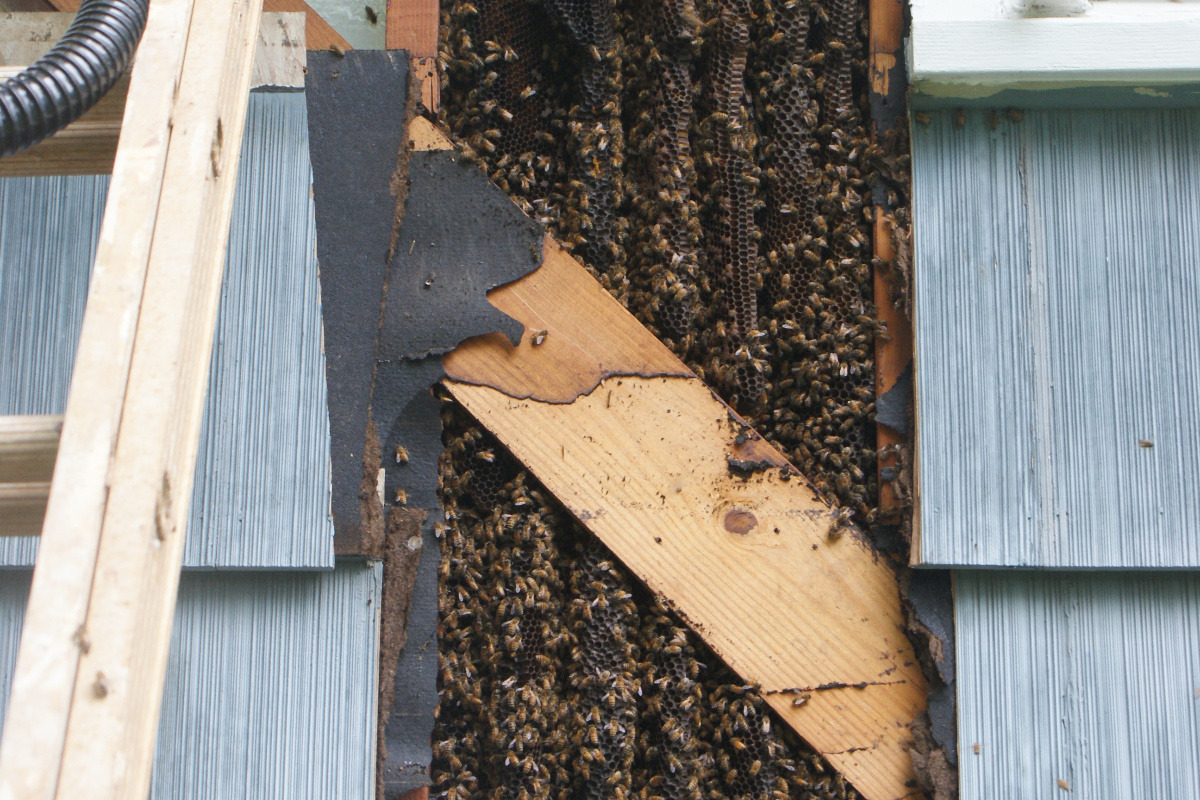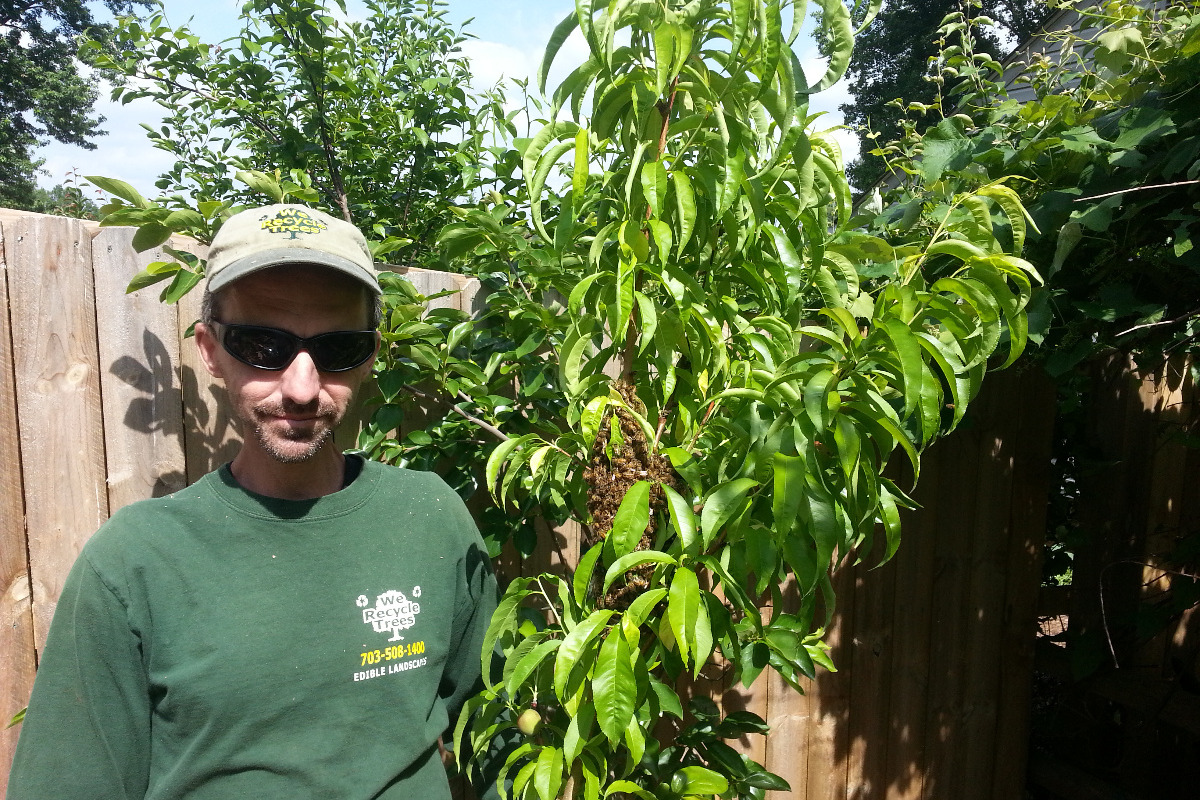
Your Complete Outdoor Solution.
You Make One Call & We Do It All …




for your
Free Estimate!
Also visit our
One out of every three bites of food we eat is a result of pollinators like honey bees. Did you know honey bee colonies are dying in VA at a much higher rate than the nation as a whole???
Honey bees are so important that farmers often have bee hives transported and then placed on their farm to provide pollination for their crops.
Have you ever heard people talking about Colony Collapse Disorder? Over the winter of 2017-2018 somewhere around 75% of my honey bee colonies died, primarily due to a parasite called nosema.
Nosema builds up on old honeybee comb over time and eventually reaches levels that kill the bees. I had been keeping bees since 2006, so the vast majority of my comb was old and needed to be changed out. I had right around a thousand individual boxes (each hive was made up of anywhere between two to 6 boxes) and I had been removing the old comb manually from the dead hives

and then I dipped both the frames and boxes in boiling wax to completely sterilize everything.

I finished the majority of this process in 2020 and now I just need to do it for the hives that die. When honeycomb isn't guarded by bees, plenty of parasites show up to eat the honey, pollen, and the wax itself …

So are you curious how I came about wanting to "build a better bee" ? Back in 2006 my father was diagnosed with lung cancer. As the year went on, I was finding the company I worked for complaining more and more about my wanting to take time off to spend with my father ~ be it fun trips while that was still possible, or to take him to medical appointments …
So I quit my job, so I could spend more time with my dad while he was still alive, but I still needed to pay the bills … I have always loved plants and gardening, so I started a company called Edible Landscapes, so I could help people grow some of what they eat.


The first thing I noticed is although I was seeing healthy trees and plants around my yard, there was little fruiting. So I got my first bee colony from a local beekeeper. And while I was hoping for some direction, I never received any real advice or assistance with my bees. Somehow they managed to make it through the first winter and I made a split the following spring. Turns out the colony was getting more and more of a parasite called varroa mite and eventually died. However, the split survived and that next spring there was so much fruit in my yard it was unbelievable. I was hooked on honeybees!
So let me give you a little history about the the source of how most people get their bees. It is driven by a supply problem and not so much about what is good for the bees … Different races of bees exist and they breed at different rates. Races of bees that build up later (Russian & Carniolian) are good in that they don't eat all their honey when there isn't new food to gather, but those same bees aren't good candidates to use as breeding stock because everyone wants their bees early. But the Italian bees start raising babies super early and don't pay attention to what is available for them to feed on, so those are what winds up being commercially available. And these same bees aren't resistant to the varroa mites, and don't defend their colony well against hive beetles. So many of these colonies die out from starvation, or get killed outright by parasites. So once I realized why Italian bees aren't good for this region, I bought some Russian and Carniolian queens.
But an even better source of breeding stock is bees surviving in the wild. So I also listed myself with all the local pest management companies who to this day, refer me to anyone with honeybees. I remove and relocate them from structures.

Any bees surviving in a wall without any human assistance means they are somehow existing with the parasites, without the treatments that commercial beekeepers typically treat their bees with.


Not sure if that is an outright resistance, or a grooming habit that means the mites are removed and killed, but the specifics aren't my main concern. The reality is that those bees are surviving. And by not bringing in any Italian genetics to dilute my own locally developing genetics, my death rate has been going down for many years.
I also collect swarms from colonies that have not died for whatever reason over the previous winter, so I have been steadily been increasing the number of colonies I have.


So I have slowly been building a better bee …
But now I have been forced to think about why this problem with Nosema/Colony Collapse is happening with my hives, that were previously surviving much higher than the national average. And then it dawned on me. The tree fails before the honeycomb is 10 years old like most of mine is now. And the bees are forced to abandon the old nest and build a new home. So in effect, that is what I am now doing on a giant scale for them … And the results are so beautiful, I just love lifting the new frames to look at them …

So I needed to make new hives to offset any winter losses, and just in general to grow the scope of the breeding pool. But only dividing a colony into a couple of splits at most, you really can't expand all that quickly. So I learned how to do what is called grafting, where by you remove a group of just hatched larvae from a colony that you feel is one of your best, and make many daughter queens. Normally the first queen to hatch will trigger the colony to kill the rest, because there can only be one queen per colony. But if you enclose them all in little cages, you can get large groups of queens to hatch and split them all up into individual colonies.

So once I had mastered this skill, my numbers really started to increase. For the past five years I have been going into winter with over 100 colonies and last year I broke 150. Good thing, with as many as are dying …

I manage around 25-ish yards around the Falls Church, Vienna, Fairfax areas.

All with only occasional help from other people who want to learn about beekeeping.
I have been pouring seemingly endless money into the actual hive equipment, sugar to feed them in the fall every year, and maintenance around the hives in the foster locations …

Back in 2018 I had to invest close to 1K in building the custom welded steel dip tank to use for dipping the old hive equipment in boiling wax, along with another $650 for the mix of waxes required. My Costco sugar bill topped $2000 last year. But I continue to do it, because I love my bees …
If you are close and have time to help with the actual work of making the new splits, building equipment, and relocating them, I love making new friends and many hands make lighter work. It's a guaranteed way to learn more than any beekeeping class could teach you. or sign up to volunteer if you would like to spend some time working on and learning about bees.
For those of you close to the Northern VA area, I have local spring honey available, as a thank you when you donate to the sugar fund.
Suggested donation is $10 per 1 pound jar but we will happily take more.
Thanks,
—Tom Hayes
